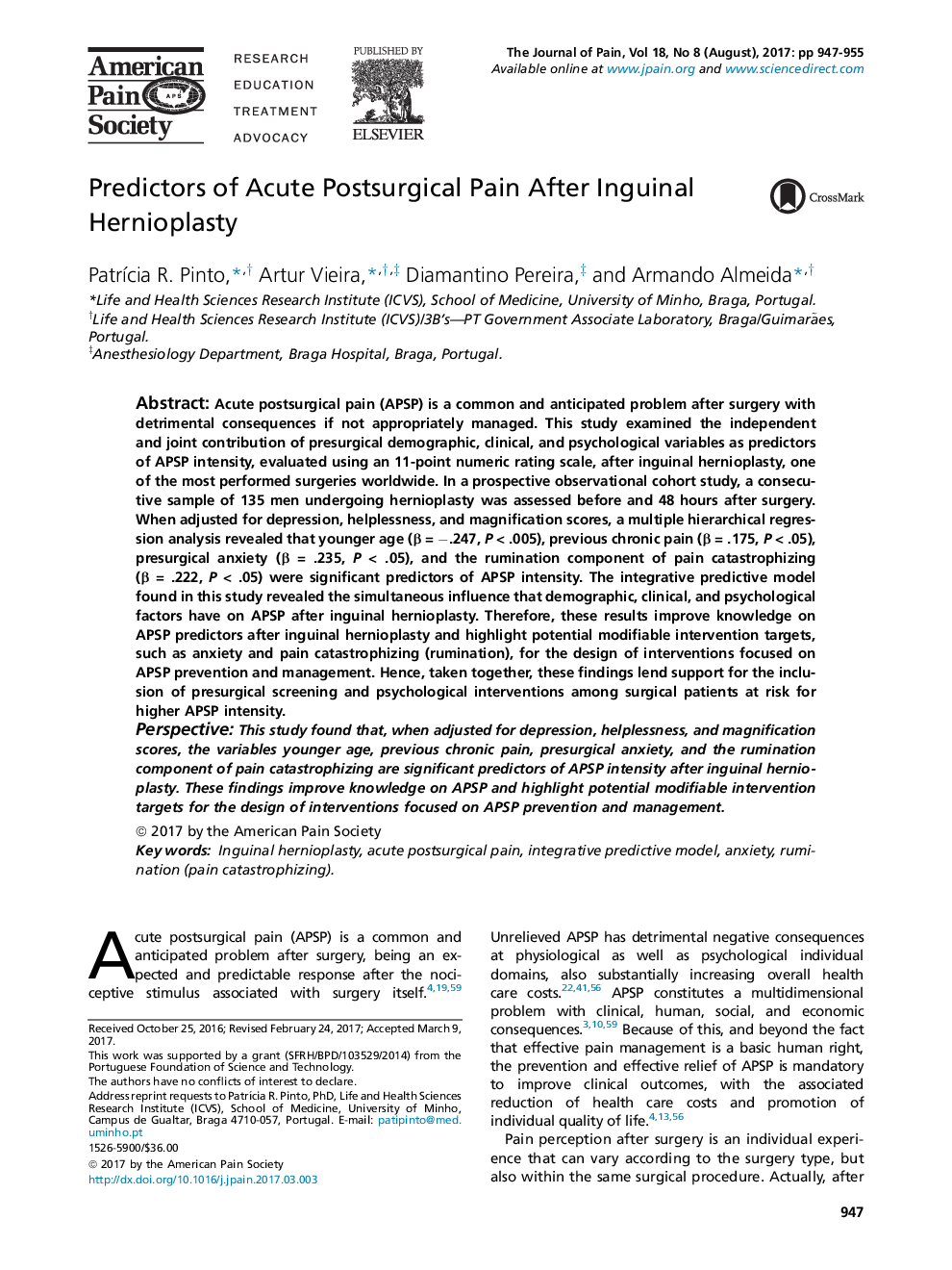| Article ID | Journal | Published Year | Pages | File Type |
|---|---|---|---|---|
| 5577947 | The Journal of Pain | 2017 | 9 Pages |
â¢Younger age was associated with higher levels of acute pain after inguinal hernioplasty.â¢Previous chronic pain was a significant predictor of pain intensity after inguinal hernioplasty.â¢Presurgical anxiety was predictive of acute pain after inguinal hernioplasty.â¢The rumination component of pain catastrophizing significantly predicted acute pain after surgery.â¢This study highlights modifiable intervention targets for interventions focused on pain prevention and management.
Acute postsurgical pain (APSP) is a common and anticipated problem after surgery with detrimental consequences if not appropriately managed. This study examined the independent and joint contribution of presurgical demographic, clinical, and psychological variables as predictors of APSP intensity, evaluated using an 11-point numeric rating scale, after inguinal hernioplasty, one of the most performed surgeries worldwide. In a prospective observational cohort study, a consecutive sample of 135 men undergoing hernioplasty was assessed before and 48 hours after surgery. When adjusted for depression, helplessness, and magnification scores, a multiple hierarchical regression analysis revealed that younger age (β = â.247, P < .005), previous chronic pain (β = .175, P < .05), presurgical anxiety (β = .235, P < .05), and the rumination component of pain catastrophizing (β = .222, P < .05) were significant predictors of APSP intensity. The integrative predictive model found in this study revealed the simultaneous influence that demographic, clinical, and psychological factors have on APSP after inguinal hernioplasty. Therefore, these results improve knowledge on APSP predictors after inguinal hernioplasty and highlight potential modifiable intervention targets, such as anxiety and pain catastrophizing (rumination), for the design of interventions focused on APSP prevention and management. Hence, taken together, these findings lend support for the inclusion of presurgical screening and psychological interventions among surgical patients at risk for higher APSP intensity.PerspectiveThis study found that, when adjusted for depression, helplessness, and magnification scores, the variables younger age, previous chronic pain, presurgical anxiety, and the rumination component of pain catastrophizing are significant predictors of APSP intensity after inguinal hernioplasty. These findings improve knowledge on APSP and highlight potential modifiable intervention targets for the design of interventions focused on APSP prevention and management.
